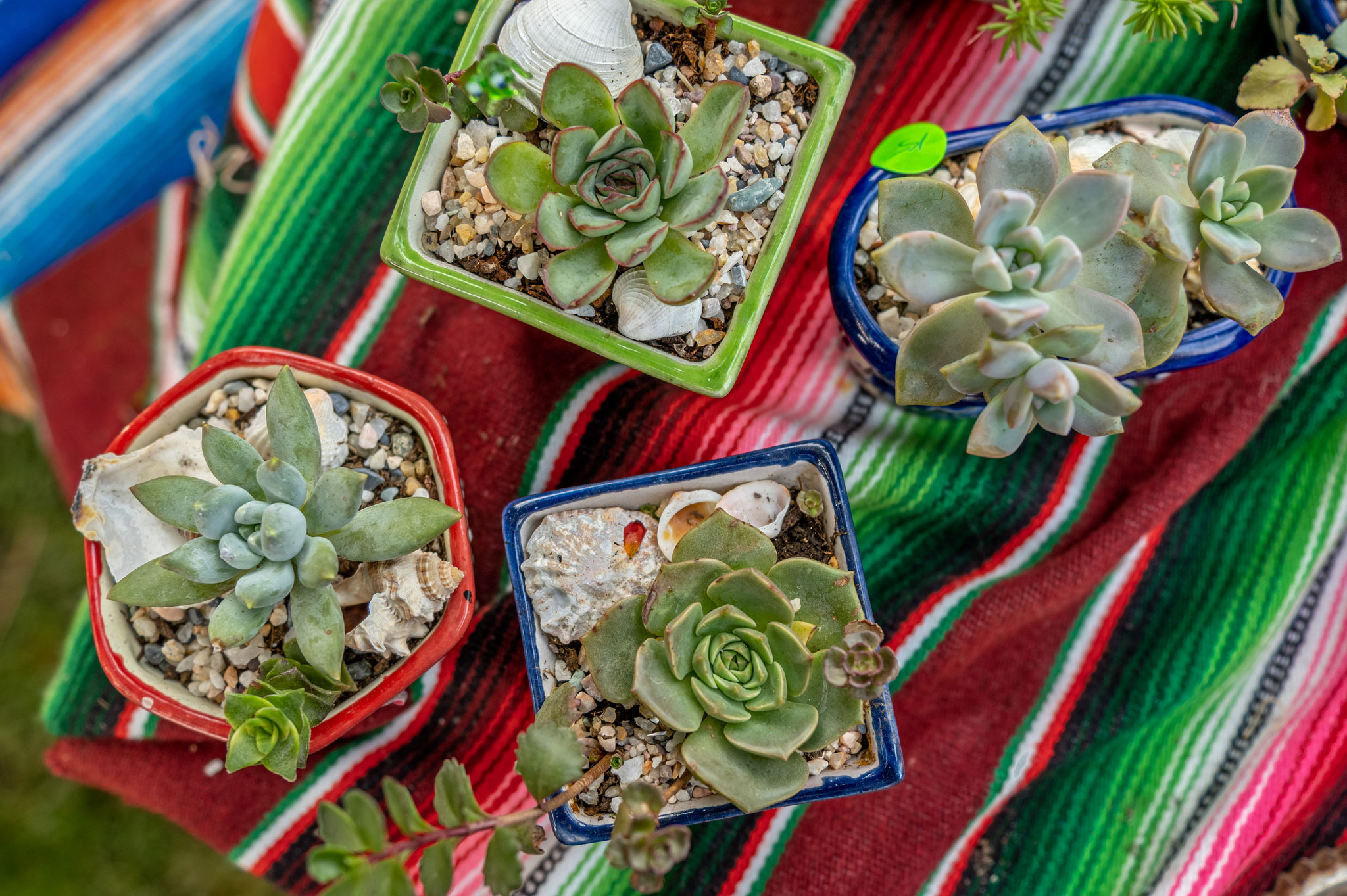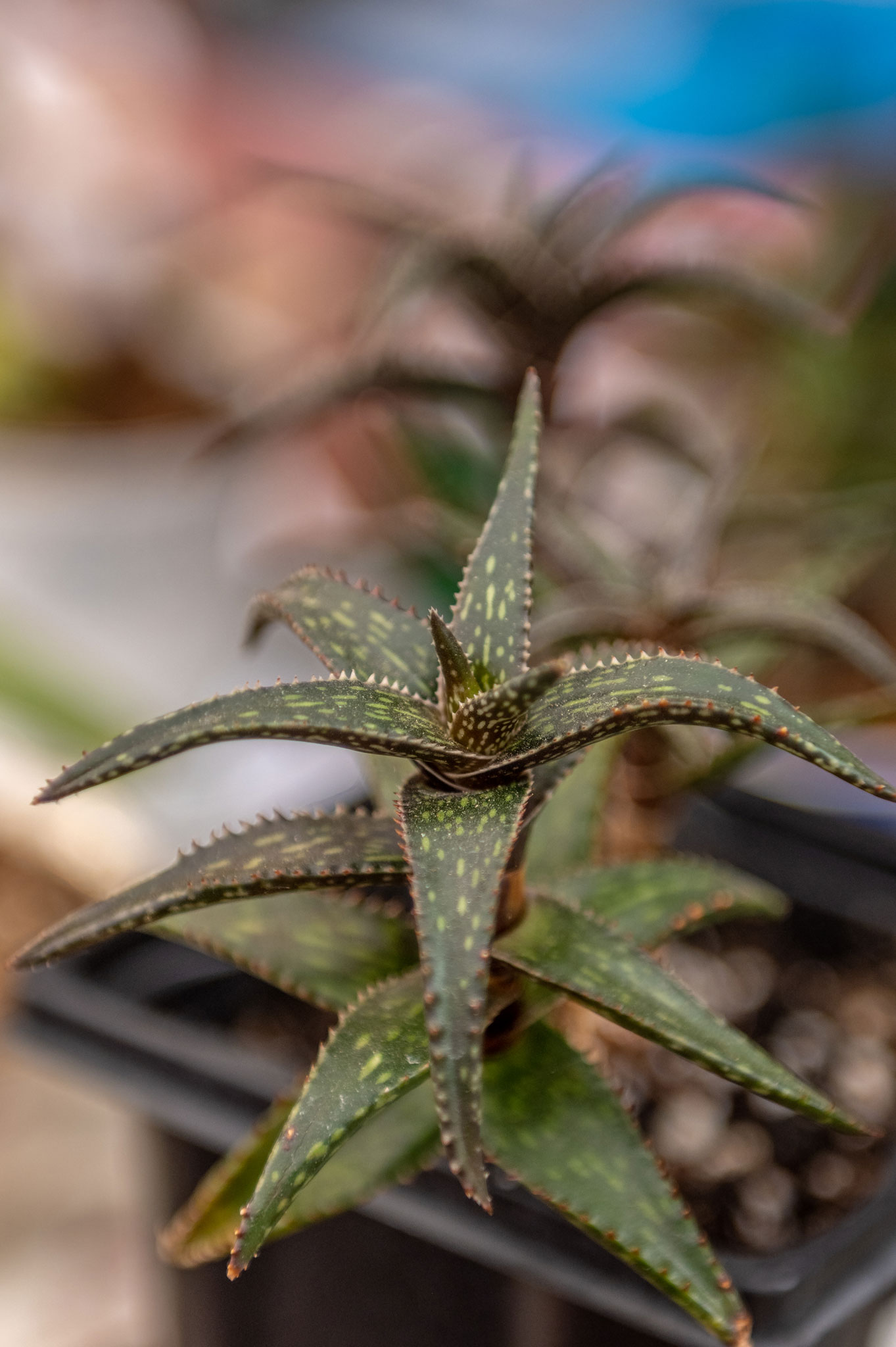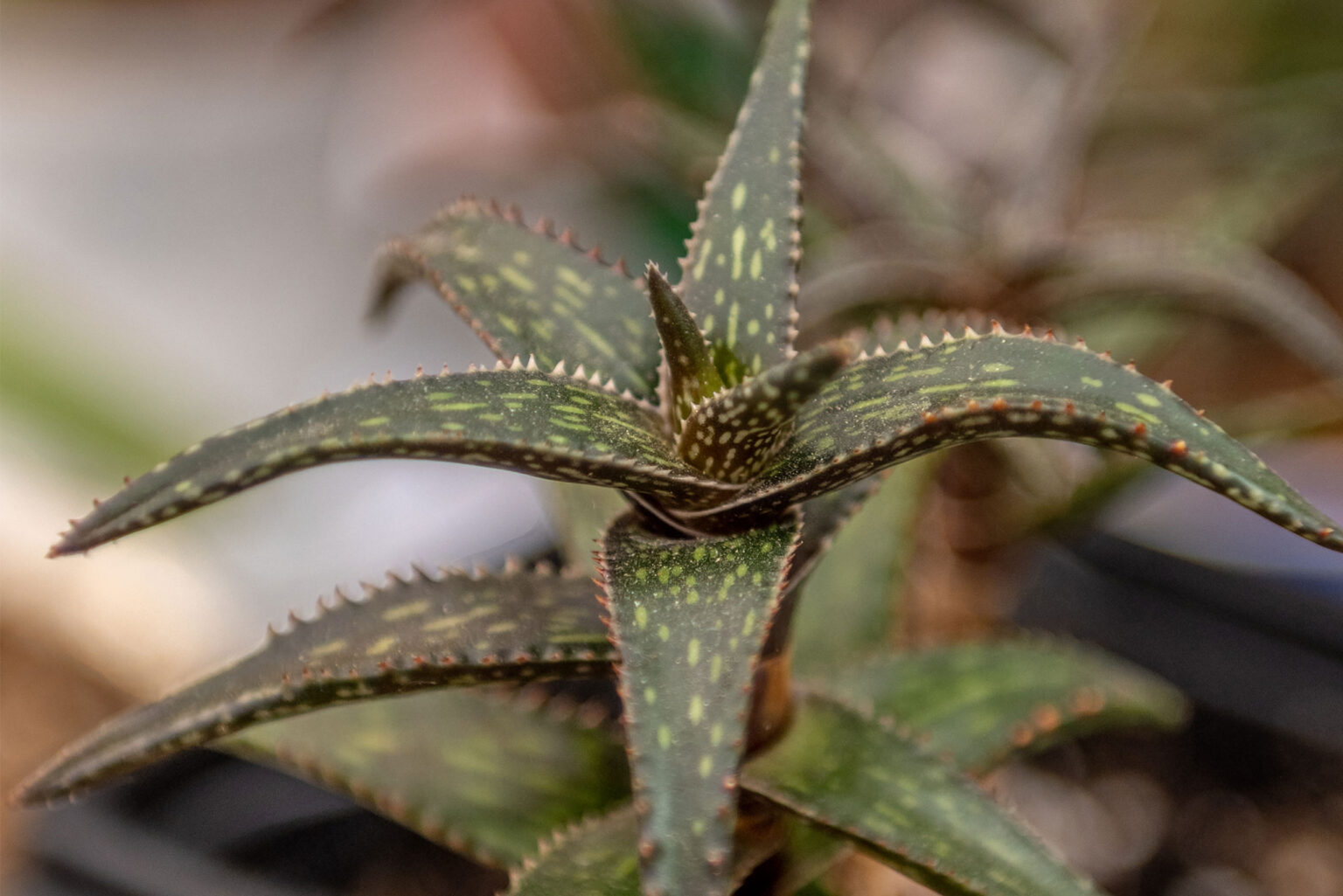I find it somewhat amusing that plants designed to thrive in hot, dry, desert conditions are called “succulents.” For me, this word conjures images of slurping mouthfuls of juicy fruit on a late summer afternoon. But succulent plants are compact water conservationists with sticky, tightly protected flesh that can survive on mere droplets for extended periods of time. Because they’re easy to take care of and uniquely formed, they have become popular plants to cultivate at home.
There are a wide variety of plant families that contain succulent species. Probably the most recognizable are those in the cactus or Cactaceeae family, but the fig-marigold and stonecrop families also have a lot of succulent species. Their most notable feature is that their stems and leaves become swollen and plump as they store water and adapt to dry environments. If watered too much, they can rot. If watered too little, they shrink into their roots. They are experts at stretching their need for water and nutrients over time and often need very little maintenance.
There is some debate as to whether cacti are succulent plants, so for this article, I will leave them out. For this discussion, I will refer to common succulent plants like agave, yucca, aloe, bromeliad, sedum, sempervivum, echeveria, euphorbias, halophyte, graptopetalum paraguayense (ghost plant) and others.

» Environment
Generally, succulents prefer warmer temperatures, somewhat dry and well-drained soil, and direct sunlight. However, there are a handful that do endure below-freezing temperatures, such as ground-covering sedum and brightly colored sempervivum. Succulent plants also thrive in low-humidity conditions, although they do ultimately require water to survive. Extreme variants in temperature, lack of sufficient water and the absence of sunlight can also significantly affect your plants.
» Soil
If planting your own succulents or re-potting, either use a pre-bagged growing medium designed specifically for succulents or make your own with one part potting soil and one part coarse sand (not from the beach). Plant in a roomy pot for the size of the plants with holes in the bottom for drainage. You can fertilize with a house plant fertilizer up to twice a year in the summer months by diluting it to half the prescribed rate.
» Light
Most succulents prefer full to partial sun, so choose a sunny windowsill with at least six hours of direct sunlight. You can also use artificial grow lights, if sun exposure is an issue. More than usual sun exposure can make your succulents change colors or “blush.” The absence of sunlight will cause them to be dull or ashen in color. Healthy succulents can bloom pink, orange, purple, blue, nearly black and even red.
» Water
A succulent’s active growing season is usually spring and summer, the warmer months. During this time, they’ll need a little more water but during the winter, they only need water every two to three weeks to keep the leaves hydrated. To water, soak the growing medium until the water runs from the drain holes. Then, when the soil completely dries out, water again. Water generously instead of in small doses. Of course, some species require a little different care than others. Make sure you know your plant and its instructions for care.
» Benefits
Growing succulents indoors creates cleaner air, can provide medicinal properties (aloe and yucca), and may mitigate moods. Here are three diverting succulents that are easy to grow indoors, grow well in smaller pots and have unique characteristics or appearances.
1. Jade Plant (crassula ovata):
This plant has fat, shiny, oval green leaves with some red tips, a thick woody trunk with branches and white or pink star-shaped flowers.
2. Aloe Vera: Well-known for its medicinal properties, this popular plant grows thick, pointy leaves from a central point and can range in color from green to gray.
3. Panda Plant (kalanchoe tomentosa): This smallish succulent has furry, gray leaves with brown spots on the ends and lives for a long time, if properly cared for. Flowers are rare. N
By S. Michal Bennett
As Featured In: Winter/Spring 2023




